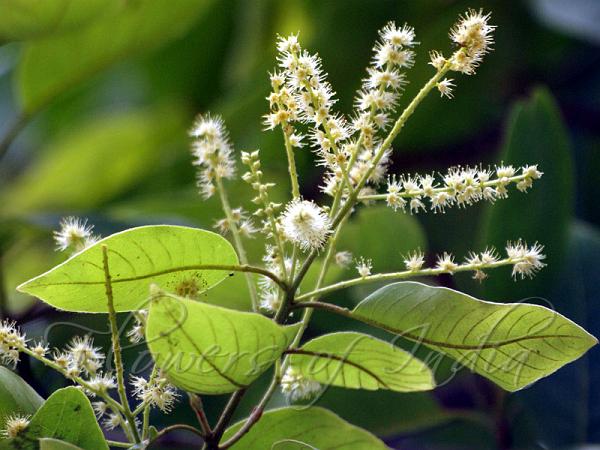|
| Chebulic Myrobalan |
|

|

| File size | 180972 |
| Original date | 6/30/09 11:44 PM |
| Resolution | 800 x 600 |
| Flash | Flash did not fire, auto |
| Focal length | 300.0mm |
| Exposure time | 1/500s |
| Aperture | 5.6 |
| Focus Distance | |
| Metering Mode | Multi-segment |
| Camera make | SONY |
| Camera model | DSLR-A100 |
| Sensor type |
|
|
|
Photo: |
Botanical name: Terminalia chebula Family: Combretaceae (Rangoon creeper family)
Chebulic Myrobalan is a flowering deciduous tree called in English the
Myrobalan or sometimes the Chebulic Myrobalan. It is
native to the Indian subcontinent and the adjacent areas such as Pakistan,
Nepal and the south-west of China stretching as far south as Kerala or
even Sri Lanka where is called Aralu. This tree yields smallish, ribbed
and nut-like fruits which are picked up when still green and then pickled,
boiled with a little added sugar in their own syrup or used in preserves
or concotions. The seed of the fruit, which has an eliptical shape, is
an abrasive pit enveloped by a fleshy and firm pulp. Chebulic Myrobalan
can reach heights of 20 meters.
Medicinal uses: Chebulic Myrobalan is highly regarded as the
'king of medicines' in the Ayur-Vedic Medicine. It is reputed to cure
blindness and it is believed to inhibit the growth of the malignant
tumours. It is allegedly also a powerful detox agent.
Chebulic Myrobalan is highly regarded as the
'king of medicines' in the Ayur-Vedic Medicine. It is reputed to cure
blindness and it is believed to inhibit the growth of the malignant
tumours. It is allegedly also a powerful detox agent.
Medicinal uses:
 Chebulic Myrobalan is highly regarded as the
'king of medicines' in the Ayur-Vedic Medicine. It is reputed to cure
blindness and it is believed to inhibit the growth of the malignant
tumours. It is allegedly also a powerful detox agent.
Chebulic Myrobalan is highly regarded as the
'king of medicines' in the Ayur-Vedic Medicine. It is reputed to cure
blindness and it is believed to inhibit the growth of the malignant
tumours. It is allegedly also a powerful detox agent.| Identification credit: Gurcharan Singh | Photographed in Delhi. |
• Is this flower misidentified? If yes,